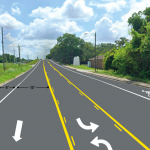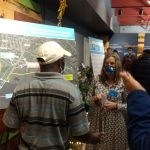[November 9, 2021]
Rethink Folly Road Recap
The Rethink Folly Road (RFR) Steering Committee met October 27, 2021. This Committee is made up of elected officials and stakeholders (including Charleston Moves staff) representing Charleston County, City of Charleston, Town of James Island, City of Folly Beach, and Berkeley-Charleston-Dorchester Council of Governments (BCDCOG). Planners and engineers from these entities, as well as the SCDOT, also participate.
The Committee makes recommendations to collaboratively move toward the Rethink Folly Road vision. For information, meeting minutes, updates, and the Rethink Folly Road Plan itself, visit rethinkfollyroad.com.
Two of Charleston Moves’ key priorities are included in RFR work. Those are Battery2Beach (battery2beach.com) and a safe Wappoo Cut crossing (https://charlestonmoves.
The October RFR meeting included a number of important updates and actions. Below is a wrap-up of the items of interest to Charleston Moves:
I. Online Progress Tracking
The RFR Committee wants to implement multiple ways to get information out to the public, including a mapping tool to track redevelopments and infrastructure improvements as they are occurring. The RFR consultant, Toole Design, is putting this map together and locating it on the RFR website.
This mapping tool is necessary because not only are improvements in the works for Segment I, which runs from Ellis Creek to Walmart, but there are multiple redevelopment projects along Folly Road that are required to include a multi-use path in their design. This requirement is part of the Folly Road Overlay, and applies to parcels that undergo at least 51% redevelopment, whether in Charleston County, City of Charleston, Town of James Island, or City of Folly Beach.
II. Segment I Update
Bicycle, pedestrian and bus infrastructure improvements for the segment of Folly Road from Ellis Creek to Walmart have been in the design stage for a long time. The funding was secured through federal sources via the BCDCOG, as well as Charleston County, City of Charleston and Town of James Island.
Right of way discussions have begun, and these negotiations will likely take until late 2022 to complete. The benefit to property owners, in addition to having safe bike/ped access along their frontage, is that they are not responsible for maintenance. Once right of way discussions are done, the County estimates construction will go out to bid at the end of 2022, and construction would take a year to complete.
III. Segment II?
Charleston Moves staff pointed out that the Committee could be identifying the next phase while Segment I negotiations are ongoing. A potential Segment II discussion will likely be on the next agenda. One option includes an area near the City of Folly Beach, in proximity to Battery Island Drive. Charleston Moves is taking the lead on a technical assistance grant application for conceptual planning near the Wappoo Cut Bridge and northern James Island.
IV. Jurisdictional Updates
Most notable was the news that Charleston County Council adopted zoning ordinance amendments the previous evening (October 26, 2021), which includes the multi-use path requirement in the Folly Road Overlay.
Charleston Moves also asked for a discussion at the next meeting to see if the Committee can start planning around a Folly Trolley, as recommended in the RFR Plan. James Island’s Mayor Woolsey formally requested a report on the subject from CARTA at the next meeting.
V. Folly Road Property and Business Owners Meeting
Attendees were provided a plan overview/refresh, as well as updates on what has been accomplished so far. Accomplishments include Segment I design, completed bus stop guidance, the inclusion of the multi-use path requirement in the Overlay, and the increase in bus frequency along CARTA’s Folly Road route.
For business and property owners, the RFR Plan does not just provide walking and biking benefits, but also health, economic and safety benefits. Some of the stats provided are listed at the end of this blog entry. Attendees answered a few poll questions, including what they are most excited about with this plan (responses included walkability, slower speeds, and being able to more easily bike to the beach) and what concerns they have about the plan. The Committee wants to grow the Property and Business Owners Group, so interested parties should review at rethinkfollyroad.com.
Also, a consultant has been brought on to conduct a corridor analysis to fill in some information gaps. Potential areas of assistance may include baseline demographic, economic and real estate data for analyzing opportunities along the corridor, as well as facilitating conversations among property owners/users and agencies to maximize potential returns. Accessibility impacts value, and the “experience” of the street makes all the difference to customers.
The full presentation can be found here: https://
Some of the statistics/case studies provided:
- 46% of active baby boomers would prefer to live in a walkable community
- 52% of Americans would like to live in a place where they don’t need to use a car very often
- 45% of millennials are consciously replacing driving with other modes
- 1/3 of adults in the US are physically inactive, and walking is a basic form of physical activity that can be easily incorporated into daily activities that is accessible to all income levels
- AARP has cited that bike riders will go out of their way to use a street that has good bicycling infrastructure (which means more business exposure)
- Lower travel speeds means improved survival rates in a hit
- Property values increase by $700 – 3,000 for each additional point on Walk Score
- Retail sales go up after complete streets improvements; example of Hillsborough Street in Raleigh, NC
- In the first five years after Spartanburg, SC announced complete streets improvements, over 100 new businesses opened and downtown hospitality taxes saw an 8% annual increase


